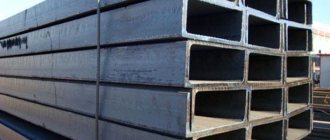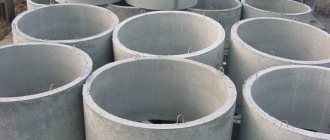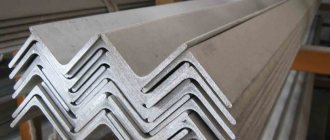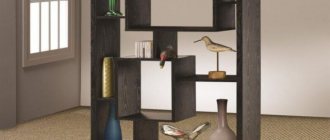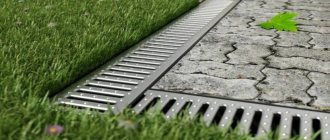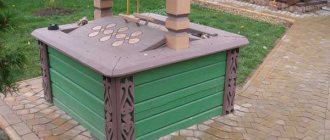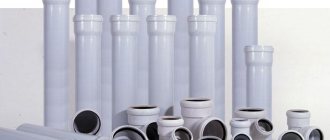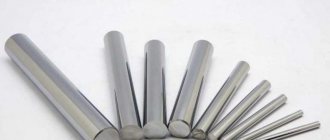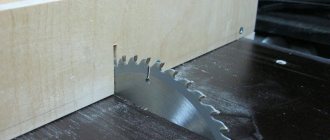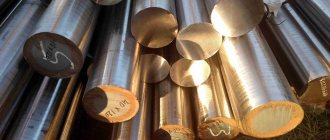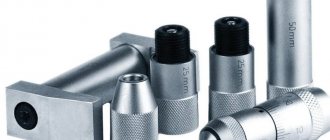The pipeline places a large load on spans and supporting engineering structures. This is due to the large weight of pipes, fittings, connecting fittings and other components. They are components of heat supply systems, main and technological transportation lines.
Pipes and other components are predominantly made of metal and often have large installation dimensions. The weight of a linear meter of pipes, even if they are made of lightweight composite materials, increases significantly when the volume of the lines is filled with technological products, which in the case of heating mains is a liquid coolant. The load especially increases when pumping liquid substances (water for drinking and hot water supply, water with antifreeze of heating mains, process solutions, suspensions).
In addition to static loads during operation, thermal changes occur in the linear dimensions and diameters of components. It is associated with seasonal fluctuations in the temperature of the surrounding atmosphere and climatic conditions in the accommodation areas. An important factor is the temperature of the transported agent itself, filling the internal space of the pipeline. For example, an increase in steam temperature by 100°C leads to an extension of one linear meter of the steam pipeline by 1.2 mm, which leads to a longitudinal displacement of linearly extended sections of the heat pipeline.
In addition, when pumping, pipelines are subject to torque, transverse and axial loads. Transportation of the transported medium is complicated by gusts of wind, water hammer, vibration of different amplitudes and cyclicity.
Shrinkage of a wooden house
In one year, the log house can become lower by 15%. The average shrinkage is 8%. However, it can occur unevenly, which negatively affects the condition of the rafter system. The size of the wooden structure changes all year round. During the rainy summer season, the wood swells, and in winter the material dries out. In addition, walls gain and lose moisture in different ways, depending on the lighting and wind rose. If there is support on the central load-bearing wall, the deformations between it and the outer walls are significantly different, which also affects uneven changes in the geometric dimensions of the house. During the heating season, the walls, especially the central one, decrease in size due to drying out.
If there is no central wall, even greater problems can arise. If the rafter system is not assembled as a truss, its rigidity is significantly lower. As a result, not only vertical but also horizontal loads act on the walls. Under the influence of pressure, they can bend outward, and the house in plan will take the shape of a barrel. In this case, the roof is deformed and sag at the ridge. “Pyatistenka” allows you to get rid of this problem or significantly reduce it.
Purpose of using sliding supports
It is not always advisable to rigidly fasten the rafter legs to the mauerlat or to the floor beams with nails, staples, etc. If the frame of the house can shrink, it is necessary to create the opportunity for the rafters to move relative to the supports. Previously, this was done using forged wire, which created a connection with a certain degree of freedom of parts of the structure.
Since then, technology has changed, and more advanced devices have been used, such as sliding rafter supports. It is attached to the walls as follows:
- to the upper crown of the log house;
- to the top frame of the frame structure;
- to floor beams;
- to the Mauerlat.
What are pipeline supports used for?
The reliability and safety of pipelines at installation sites is ensured not only by the high-quality selection of pipes and connecting fittings, but also by reliable retention of the shaft in the design position. The structures intended for this purpose must absorb and correctly distribute the acting loads on the ground or a specially prepared foundation.
Of no small importance is the supporting part of the structure, which protects the pipe from bending and opening the connecting nodes at the joints. In the supports, the holding force is provided by elastic gaskets sandwiched between the pipeline and the support.
In sliding structures, the base is not fixed to the concrete surface and can move freely along a horizontal plane. To support pipes, embankments, trenches, racks and shelves, specially equipped with support shoes, are used; pipelines are often secured to walls and overpasses with brackets.
When laying heating mains in a tray, before routing the heating plants, a support cushion is placed under the base of the pipes, which protects the structure from abrasion and deformation due to temperature changes.
Design features of rafters
A pair of gable roof rafters is made according to one sample. The connection in the ridge is made end-to-end, with a gap or overlap. The rafters are connected to each other by a metal plate with bolts and nuts. The main design feature is the creation of sliding fasteners in the lower supports. The rafters are placed on the Mauerlat on top or with a mortise to fix the structure in a vertical plane.
The sliding support for the rafters, which serves as a fastening element, is made of two parts:
- strip fixed on the rafter leg;
- a corner with a loop attached to a supporting beam (mauerlat or support beam).
There is an even simpler option for how a sliding support for rafters can be made (photo below). For this, a corner with a slot is used. It is mounted on the rafter along its axis, and in a slot with a gap there is a bolt head screwed into the body of the Mauerlat.
This support for rafters (sliding - Kucis 120x40x40) costs only about 25 rubles apiece and is easier than others to install.
The devices are made of galvanized steel plates. They are attached to one or both sides of the rafters. The double-sided option is preferable for roofs with high wind and snow loads and low weight of the roof structure. Fasteners are used with an anti-corrosion coating so as not to damage the wood. The stroke length depends on the expected displacements and ranges from 6 to 16 cm.
Sliding supports OST 24.125.ХХХ-01
Sliding clamp supports for pipelines
We manufacture in accordance
OST 24.125.ХХХ-01
Page navigation
The standards are applicable for pipeline supports of nuclear power plants and thermal power plants:
- from pipes manufactured using a seamless method, the outer diameter of which is in the range of 57-920 mm. Pipelines can be made of steel alloyed with chromium and molybdenum in accordance with OST 108.302.103-78. The temperature of the transported medium through them should not exceed 560C;
- from pipes without seams with an outer surface diameter of 57-820 mm, made of carbon steel, or with alloying components in the form of silicon and manganese according to OST 108.320.102-78 and OST 24.125.30-89, and the temperature of the transported medium up to 440C;
- from pipes made by seamless production, with an outer diameter of 57-325 mm from austenic steel according to OST 24.125.01-89 and a temperature of the transported medium up to 440C;
- from pipes obtained by electric welding, with an outer diameter of 530-1620 mm, made of carbon steel according to TU-14-3-808. The temperature of the transported medium should not exceed 300C.
Sliding clamp supports OST 24.125.154-01
Sliding clamp supports Dn 57-219
| Day, mm | Chrome-molybdenum-vanadium steel up to 560 °C | Carbon and silicon-manganese steels up to 440 °C | Austenitic steels up to 440 °C |
| 57 | 01 | 18 | 36 |
| 76 | 02 | 19 | 37 |
| 89 | – | 20 | 38 |
| 108 | 03 | 21 | 39 |
| 133 | 04 | 22 | 40 |
| 159 | 05 | 23 | 41 |
| 194 | 06 | 24 | – |
| 219 | 07 | 25 | 42 |
Sliding clamp supports Dn 245-426
| Day, mm | Chrome-molybdenum-vanadium steel up to 560 °C | Carbon and silicon-manganese steels up to 440 °C | Austenitic steels up to 440 °C |
| 245 | 08 | 26 | 43 |
| 273 | 09 | 27 | 44 |
| 325 | 10 | 28 | 45 |
| 377 | 11 | 29 | – |
| 426 | 12 | 30 | – |
Sliding clamp supports Dn 465-920
| Day, mm | Chrome-molybdenum-vanadium steel up to 560 °C | Carbon and silicon-manganese steels up to 440 °C | Austenitic steels up to 440 °C |
| 465 | 13 | 31 | – |
| 530 | 14 | 32 | – |
| 630 | 15 | 33 | – |
| 720 | 16 | 34 | – |
| 820 | – | 35 | – |
| 920 | 17 | – | – |
Fixed and welded sliding supports OST 24.125.153-01
Sliding supports DN 530-1620
| Day, mm | Pipelines made of carbon steels with ambient temperatures up to 300 °C |
| 530 | 01 |
| 630 | 02 |
| 720 | |
| 820 | 03 |
| 920 | |
| 1020 | 04 |
| 1220 | 05 |
| 1420 | 06 |
| 1620 | 07 |
Fixed clamp supports OST 24.125.151-01
Sliding clamp supports Dn 57-89
| Day, mm | Chrome-molybdenum-vanadium steels up to 560 °C | Carbon and silicon-manganese steels up to 440 °C | Austenitic steels up to 440 °C |
| 57 | 01 | 18 | 36 |
| 76 | 02 | 19 | 37 |
| 89 | – | 20 | 38 |
Sliding clamp supports Dn 108-159
| Day, mm | Chrome-molybdenum-vanadium steels up to 560 °C | Carbon and silicon-manganese steels up to 440 °C | Austenitic steels up to 440 °C |
| 108 | 03 | 21 | 39 |
| 133 | 04 | 22 | 40 |
| 159 | 05 | 23 | 41 |
Sliding clamp supports Dn 194-426
| Day, mm | Chrome-molybdenum-vanadium steels up to 560 °C | Carbon and silicon-manganese steels up to 440 °C | Austenitic steels up to 440 °C |
| 194 | 06 | 24 | – |
| 219 | 07 | 25 | 42 |
| 245 | 08 | 26 | 43 |
| 273 | 09 | 27 | 44 |
| 325 | 10 | 28 | 45 |
| 377 | 11 | 29 | – |
| 426 | 12 | 30 | – |
Sliding clamp supports Dn 465-920
| Day, mm | Chrome-molybdenum-vanadium steels up to 560 °C | Carbon and silicon-manganese steels up to 440 °C | Austenitic steels up to 440 °C |
| 465 | 13 | 31 | – |
| 530 | 14 | 32 | – |
| 630 | 15 | 33 | – |
| 720 | 16 | 34 | – |
| 820 | – | 35 | – |
| 920 | 17 | – | – |
Peculiarities
If welded elements are used in the form of fixed-type supports, then they should be welded along the contour to the steel structures of the supporting type.
Sliding type guide supports according to OST 24.125.156-01 structurally include several elements:
Welded plate guide according to OST 24.125.157-01
Guide sliding welded supports in accordance with OST 24.125.158-01 have in their design:
Guide tile welded to the main structure according to OST 24.125.157-01
Roller type supports OST 24.125.159-01
These products consist of a clamp support part, made in accordance with the requirements of OST 24.125.154-01, and a special roller block (single or double row). The housing is mounted symmetrically - right in the center of the top tile of the roller block. Afterwards the component is welded with a continuous seam. The lower base of the roller block must be welded to the building elements symmetrically to the support axes with a continuous or interrupted seam.
Spring roller bearings in accordance with OST 24.125.165-01 include several main components in their design:
- Single or double row roller block according to OST 24.125.163-01;
- Spring block for supports of pipelines of nuclear power plants and thermal power plants according to OST 24.125.166-01.
Sliding supports OST 24.125.160-01 are designed to support the highway communications system. In addition, such elements allow more efficient load distribution and eliminate displacement during operation. Supports of this type are capable of productively absorbing loads acting in the vertical plane.
The following types of supports are used for different types of pipelines:
Weld-type guide support components
The design includes a plate, a guide part on the highway, and a support.
Clamp supports
The structure includes the support itself and a plate that performs a guiding function.
Roller supports
Such supports for pipelines have all the advantages of a sliding support element and a roller block. The main task of this element can be called reducing the friction force between the fifth support and the surface on which it rests.
Modern roller blocks can be single- or double-row. The housing is mounted symmetrically in the central part of the upper plate of the roller block. You can also weld it to it with a continuous seam during installation.
Spring roller supports in their design have the support elements themselves, as well as a guide roller block and a spring module. In most cases, they are used in pipeline systems experiencing significant vibration loads.
Such parts absorb such forces well and distribute such forces most effectively, eliminating damage to the line
www.center-mts.ru
Open and closed supports
Sliding supports for rafters (“slider”) of an open type, consisting of two parts, can be made with your own hands, but you should use a template. All parts must be adjusted to size. An open connection consists of a curved plate (mounting strip) and an angle with holes for fastening (at least five).
In a closed connection, the fastening strip is inserted into the angle holder with the ability to move, but cannot be removed from it and is non-removable. The assembled structure allows for higher quality installation. If forces arise to separate the rafters from the mauerlat under the influence of wind loads, the loop can unbend, and the closed sliding support of the rafters has greater strength.
Important! It is advisable to make a rafter system with the ability to slide relative to the base only for a symmetrical gable roof. This is its advantage, since it increases reliability at low cost. The supports can also be used for a pitched roof.
Roller supports
KN
There is also a special type of support type KN-A11, these are roller guide supports...
TS-630-00-000
TS-630.00.000 Roller supports for pipelines in SETS-631.000 Supports for welded bends in the series 5.903-13 release 8-95.rii 5.903.13…
OPB 1
Pipeline diameters from 18 mm to 530 imply the use of steel moving supports of class OPB1.
One of the types of pipeline supports are roller supports. Such products are classified as adjustable pipeline supports. When installing the structure, it is necessary to ensure the possibility of further access to the support for scheduled maintenance or repair work.
The name “pipeline roller support” speaks for itself. The main element of the roller bearings is the roller, which provides axial mobility of the pipes, as well as lateral displacement within 50 millimeters, which allows you to adjust the load on the system elements. By installing pipeline supports, it is possible to avoid breakdowns of the pipeline system caused by temperature changes, vibration, ground movement and other environmental factors.
Roller supports combine a sliding support and a roller block. The roller support block consists of several parts: the roller itself, the cage, the intermediate and support plate. According to the type of construction, roller blocks can be single-row or double-row. The roller block is installed in the center of the pipeline support, and the structure is fastened by welding. The main material for the manufacture of roller supports is carbon steel, which is resistant to deformation and corrosion. To ensure high-quality and uninterrupted operation, it is important to comply with all the necessary requirements during installation. It is for this reason that the installation of pipeline supports should only be carried out by qualified personnel. When installing roller supports, it is important that the moving parts of the structure do not slide off the base, and that their movement along the guides is smooth and easy.
As a manufacturer of metal structures, our plant offers to buy supports for pipelines of various types and purposes. The catalog of pipeline supports is presented on the website, and the cost of our products can be found in the price list.
You can place an order for adjustable pipeline supports or any other types of products online! Send us your request by filling out the order form, and a sales and production department employee will call you back.
pzmzavod.ru
Sliding support for rafters: dimensions
The support includes two components - a guide plate and an angle. The amount of permissible movement of the rafter leg depends on the size of the product.
The popular sliding support for Kucis rafters of open and closed types has a plate width of 40 mm, a support height of 90 mm, and a length of up to 160 mm. The metal for the plates is taken with a thickness of 2-2.5 mm. They are cold-formed from low-carbon steel with good ductility. Hot zinc coating provides protection against corrosion. When purchasing uncoated products, they should be painted so that the material does not rust.
The corner is attached to the support beam. If its surface is round, prepare a flat area for installation by grinding the wood on a log to the size of the L-shaped part of the part. The photo below shows a similar sliding rafter support, closed (Paz). Both types of products are made by stamping and are inexpensive.
The guides are attached to the rafters in the extreme position to provide maximum movement. Since the angle of inclination relative to the ridge changes when the roof shrinks, a hinged bolted connection must be made in the upper part of the rafters. Special perforated plates can be used here.
What types of movable supports are there?
Movable supports for pipelines have an identical design to stationary structures. The difference is that the base of the fixed supports is welded to the building structure or secured with anchors. The movable supports lie freely on a traverse or other horizontal base on which they can move. They are designed for laying pipes with an outer diameter from 18 to 1620 mm. Supports of this type are classified into the following types, grouped according to the method of attachment to the pipeline:
Installation
A sliding support for rafters when installing a roof frame is used as follows.
- Rafters are made of boards 150-200 mm wide and 50 mm thick. If the length is insufficient, the rafter leg is lengthened by adding an overlap with a chaotic arrangement of fastening elements to prevent cracking.
- A purlin is installed on top - a load-bearing beam located horizontally and perpendicular to the sliding rafters.
- In the lower part, the rafter legs are fixed on cuts made in the Mauerlat. In this case, their jamming is not allowed. But at the same time, the cuts should keep the boards from lateral distortions. The presence of a Mauerlat evenly distributes the load across the entire building. In its absence, the local pressure on the walls from the rafters becomes greater.
- Fasteners of suitable sizes are selected depending on the range of rafter displacement.
- A platform is prepared for the corner on the support log.
- The angle is attached perpendicular to the log to ensure free movement of the plate.
- The guide is inserted into the loop of the corner and attached to the rafter along its axis. Installation is done in the lowest position, since the wall below will shrink and decrease in size. In this case, the rafter leg will move down.
- The rafter boards are connected at the top in a hinged manner.
Conditions that guarantee the strength, reliability and durability of the roof
- Compliance with the necessary mechanical properties and dimensions of sliding supports for rafters.
- The location of the guide support is parallel to the axis of the rafter, and the angle is perpendicular to ensure reliable sliding.
- The cross-section of the boards for the rafters should not be less than 150x50 mm.
- The roof frame must be treated with an antiseptic and fire-resistant compound.
- Maintaining the correct proportions of the roof frame.
- Manufacturing of the entire rafter system according to the template.
- Creating a hinged ridge connection.
- The extension of rafter legs should be done alternately in the lower and upper parts.
Sliding support for rafters: application for other purposes
Wood shrinkage compensation is not only used on roof frames. It is used wherever it is necessary to create the ability to move parts of wooden structures, for example, when constructing partitions in wooden houses. If you need to decorate a bathroom wall with ceramic tiles, you cannot simply cover it with sheet material.
It is necessary to install a “floating” frame, fixed on top with sliding supports, and then attach drywall to it, onto which the tiles will be glued. Moreover, the sewing is not done all the way to the ceiling. When the walls deform, the frame will remain motionless and the cladding will not collapse.
Sliding, roller, ball and fixed supports for pipelines in Perm
To fasten, fix and hold pipeline systems for various purposes, the use of special supports is provided. First of all, these are sliding, roller, ball and fixed bearings. The use of each type is justified by specific environmental conditions, as well as the composition and type of raw materials transferred (usually oil, petroleum products, liquefied gases). An inevitable problem in the installation of piping systems is the process of pipe deformation - this phenomenon is usually observed in heat-conducting systems. And here, for the correct operation of a specific pipeline system and the prevention of emergency situations at the facility, it is necessary to select a separate type (or several types) of supporting structures for your specific conditions. is ready to provide any kind of assistance in the operation of these types of supports, as well as supports for oil pipelines across the territory of Perm and the Perm region.
About the features of each type
There are only two types of pipeline support structures: movable and fixed. Movable supports (sliding, roller, ball) are designed to ensure free movement of pipes along the transverse or longitudinal axis to avoid deformation processes. Fixed supports, accordingly, do not allow deformation of pipeline systems and ensure uniform distribution of loads/pressure. You may also be interested in steel pipeline hangers. Sliding supports (roller and clamp) provide longitudinal movement of pipes along the axis and absorb relatively large loads from pressure or weight of the structure. Roller supports are one of the subtypes of sliding ones; they are based on special rollers/rollers that ensure free longitudinal movement of the pipe without falling out of the installation. Ball joints are generally used in more specific fastenings (removal/re-attachment to other areas). Fixed (intermediate and end) are most often located on branch lines and turns to prevent violations of the integrity of the pipeline network. Installation of any type of supports involves the use of resistant, durable (usually steel) materials, subjected to additional. processing.
